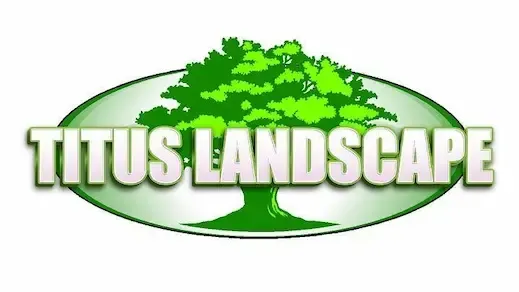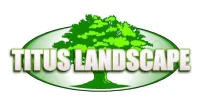Blogs

How To Add A Drain Behind Curve Retaining Wall?
To add a drain behind a curve retaining wall, assess the site to ensure proper water drainage away from the wall. Dig a trench at least 12 inches wide and deep, then place a perforated drain pipe at the bottom, sloping it downward. Backfill with clean gravel around the pipe and cover it with geotextile fabric. Install weep holes every 6 to 8 feet along the wall's base for water escape, and grade the surface to direct water away from the wall. Regularly check and maintain the weep holes to ensure effective drainage.
At Titus Landscape, we specialize in landscape construction throughout the Middle TN area, offering a wide range of services to enhance your outdoor spaces. With our expertise in retaining wall installation and design/build projects, we are committed to bringing your vision to life while ensuring your landscape remains vibrant year-round.
Key Takeaways
Site Assessment: Evaluate drainage patterns to prevent water from flowing towards the wall.
Material Selection: Use perforated drain pipes and angular gravel for effective drainage.
Drain Installation: Excavate a trench behind the wall for the drain pipe and gravel.
Weep Holes: Incorporate weep holes to allow water to escape.
Surface Grading: Ensure the area around the wall is graded away to facilitate drainage.
Retaining Wall Installation Process
Installing a retaining wall requires careful planning and execution to ensure its effectiveness and longevity. The following steps outline the key aspects of the installation process:
Site Assessment: Evaluate soil type and drainage patterns to determine wall placement.
Excavation: Prepare the foundation according to design specifications.
Material Selection: Choose from concrete, timber, or stone based on function and aesthetics.
Backfilling: Use gravel and soil to avoid compromising wall integrity.
Erosion Control: Enhance landscape while managing water runoff effectively.
Retaining Wall Materials: Choosing the Right Option
Selecting the appropriate materials is vital for the performance and aesthetic appeal of your retaining wall. Here are some common options and their benefits:
Concrete Retaining Walls: Known for strength and longevity; ideal for larger structures.
Block Retaining Walls: Versatile in design and easy to install.
Timber Retaining Walls: Provide a natural look that blends with landscapes.
Stone Retaining Walls: Add rustic charm and enhance outdoor beauty.
Considerations: Evaluate height, soil type, and water drainage requirements when choosing materials.
Erosion Control Walls: Understanding Their Importance
Erosion control walls are essential for protecting your landscape from soil erosion. Here’s what you need to know:
Purpose: Prevent soil erosion caused by water runoff or wind.
Material Selection: Use durable materials that withstand environmental forces.
Assessment: Analyze drainage patterns and soil conditions to determine the best design.
Retaining Wall Systems: Help manage water flow and stabilize soil.
Implementation: Effective erosion control measures protect your property’s integrity.
Understanding Retaining Wall Regulations
Before building a retaining wall, understanding local regulations is crucial for compliance. Key considerations include:
Height Restrictions: Know municipal limits for residential and commercial walls.
Material Guidelines: Follow specific material requirements set by local authorities.
Permit Requirements: Ensure you have the necessary permits for construction.
Consultation: Engage with local authorities or professionals to navigate regulations.
Compliance Benefits: Avoid fines and potential dismantling of non-compliant structures.
Maintaining Your Retaining Wall: Essential Tips
Regular maintenance is vital for prolonging the life of your retaining wall. Here are some essential tips:
Damage Inspection: Regularly check for cracks or shifting that indicate drainage issues.
Weep Hole Maintenance: Keep weep holes clear of debris to allow water escape.
Surface Grading: Monitor grading to ensure water flows away from the wall.
Soil Erosion Prevention: Address soil erosion to maintain wall integrity.
Proactive Care: Implement maintenance steps to preserve aesthetics and functionality.
Frequently Asked Questions About Retaining Walls
1. Why is drainage important behind retaining walls? Drainage is crucial because it prevents water buildup that can create hydrostatic pressure, leading to wall failure.
2. What materials are best for backfilling behind a retaining wall? Using angular gravel (1/2 to 3/4 inch) is recommended for backfilling, as it facilitates water flow and reduces soil compaction.
3. How often should I check my retaining wall for maintenance? Regular inspections every six months, or after heavy rains, are advisable to check for damage or drainage issues.
4. What are weep holes, and how do they work? Weep holes are openings in the wall that allow accumulated water to escape, reducing pressure on the wall.
5. Can I install a retaining wall myself? While it’s possible, it’s recommended to consult professionals to ensure proper installation and compliance with regulations.
Ensure Your Retaining Wall Lasts with Titus Landscape
Maintaining proper drainage behind a curved retaining wall is essential for its longevity and structural integrity. By following the outlined steps, including proper material selection and installation techniques, you can protect your investment and ensure the beauty of your outdoor space. At Titus Landscape, we are dedicated to providing exceptional landscape construction services throughout Middle TN, ensuring your retaining wall not only performs well but also enhances your property’s aesthetics.
Contact us now for a consultation, and let’s discuss how we can elevate your landscape while ensuring durability and functionality. Don’t wait—your dream outdoor space is just a call away!
THE BEST IN LANDSCAPE & OUTDOOR LIVING
Get your free quote today!
Contact Us
Rockvale, Tennessee 37153
Mon - Fri 8:00 am - 6:00 pm
Follow Us
© 2026 Titus Landscape. All Rights Reserved. Privacy Policy. Terms & Conditions. Web Design by Fused Media


